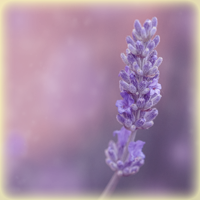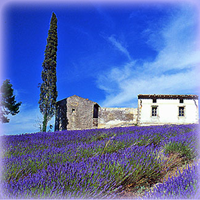The tree lavenders
how to recognize them?
FINE LAVENDER
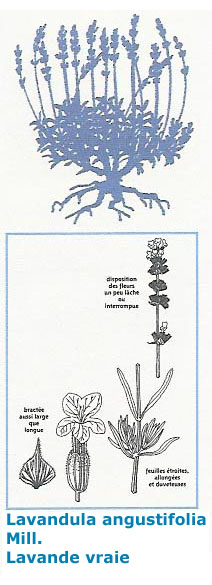
Hosted by the limestone mountains in the arid southern France.
Tufts of lavender are generally quite small.
Grows spontaneously from 600 to 1800 m altitude. (1900-5900 ft)
Fine fragrance.
Usage :
in fine perfumes and aromatherapy.
Also sold as dried bouquets and flowers.
Fine lavender essential oil is the only one that can carry the label PDO “AOP” - Appellation d’Origine Contrôlée (protected designation of origin).
* Source : Les routes de la lavande
* Drafts : Brigitte Naviner
*Source : Serge Panarotto site Provence à vivre
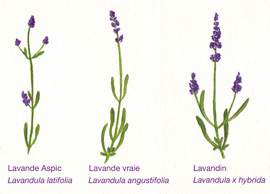
ASPIC LAVANDER

Grows spontaneously at up to 500 m (1650 ft) on the relatively low arid limestone slopes of southern France.
Tufts bear many stems.
Floral stems of 50-70 cm are largely leafless.
Very camphorated odor.
Usage :
in washing powders (Spain) and aromatherapy.
It is a true shrub, somewhat taller than true lavender, from 40-80 cm, with rather narrow leaves.
The flowers, violet blue, have a strong but pleasant camphor odor.
Blossoming occurs in August.
It was found at the time in the same regions as lavender at an altitude of 200 to 600 meters (650-2000 ft).
Almost completely gone from Provence, it is mainly cultivated in Spain and the former Yugoslavia. Total annual production is around 200 tons.
The price for Aspic lavender is lower that either fine lavender or lavandin.
It is a robust plant that resists drought well but gives a low yield.
* Source : "Lavandes Lavandins Parfum d'histoire" by Robert Veyan
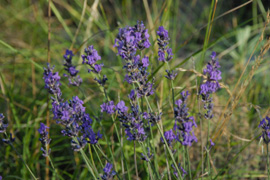
LAVANDIN

Hybrid of two lavenders.
Grows spontaneously up to 400-500 m altitude.
Camphorated odor.
Usage :
in washing powders
Also sold as dried bouquets and flower sachets
This natural hybridization is due to nectar gathering insects, especially bees. It is generally accepted that it is the ovule from Aspic that is fertilized by the pollen from lavender.
Everywhere where the two vegetation zones overlap, Lavender between 400 and 1200 m (1300-3900 ft) and Aspic between 200 and 600 m (650-2000 ft) , a natural hybrid is born – called lavandin.
Thus it is between 400 and 600 m (1300-2000 ft) that hybridization takes place.
As Jean Gasquef explains, lavender flowers earlier than Aspic; it is assumed that the lavender flowering was retarded, surely by trampling of herds causing significant injury to the plants and delaying the flower stalk development.
Sheep also graze on the young stems that still lack the pronounced bitter taste.
Blossoming, in both cases, is delayed and coincides with that of Aspic.
The active visits by bees serve to fertilize the two species and the seed produced gives rise to lavandin.
Lavandin is thus a natural hybrid : any seeds produced are infertile and reproduction must be done by cuttings. The Riez region, at an altitude of 500-600 m (1650-2000 ft), had the wonderful advantage of having quantities of lavandin in all the region’s surrounding hills.
The first lavandins began to be planted near to this source.
* On the cultivated lands of these relatively poor limestone plateaus, wheat had poor yields, around 400 kg per acre.
* On the other hand, the exodus of the young farmers who made up much of the infantry during the First World War would have had terrible consequences on the future of agriculture if other possibilities were not available for these regions to survive and so that those who did survive the carnage could make a living.


